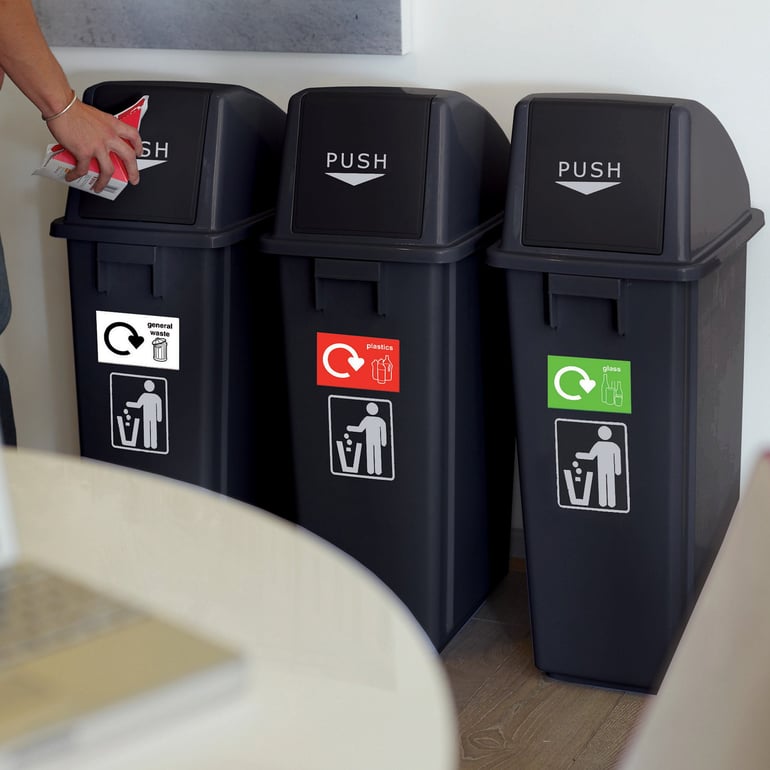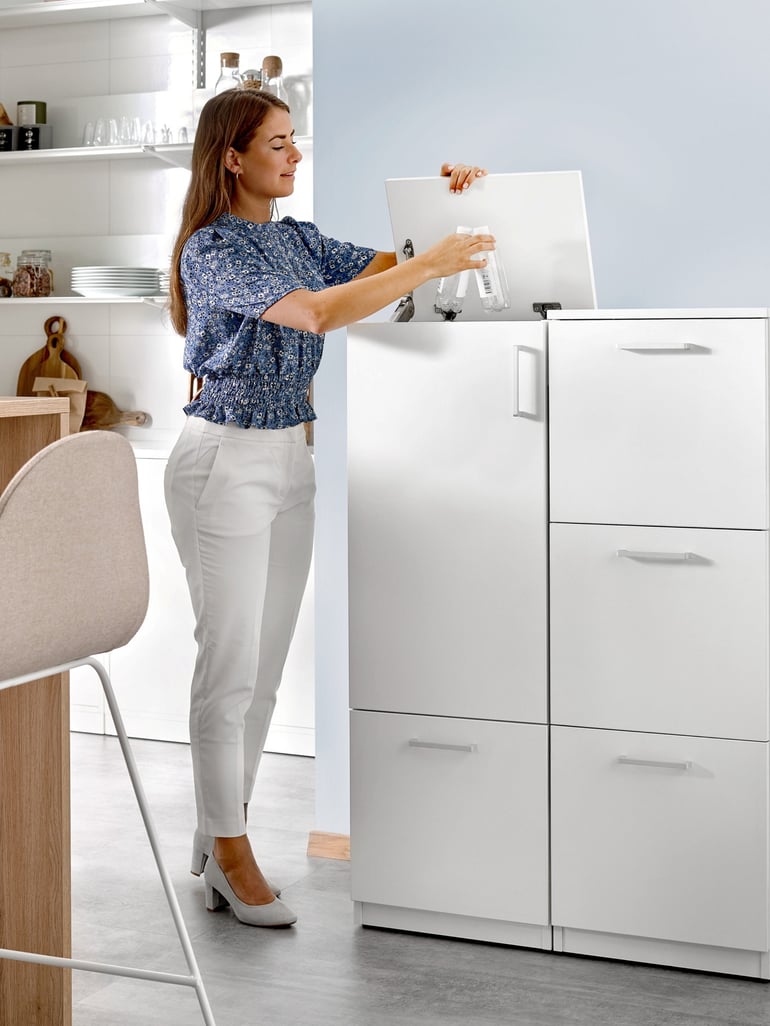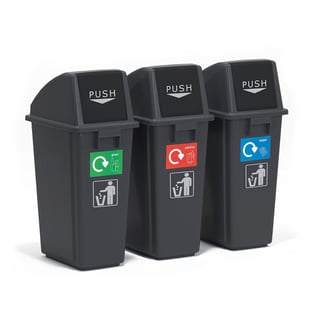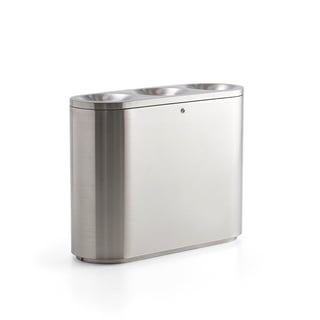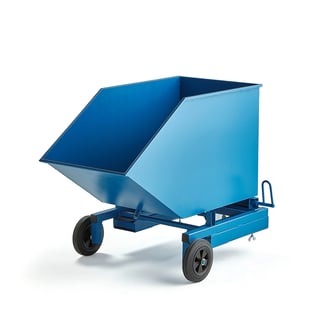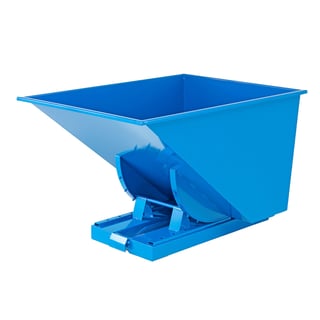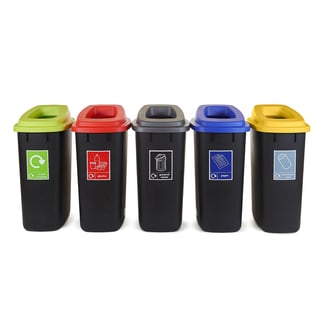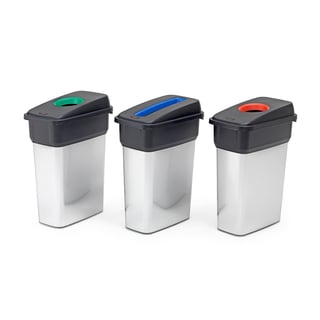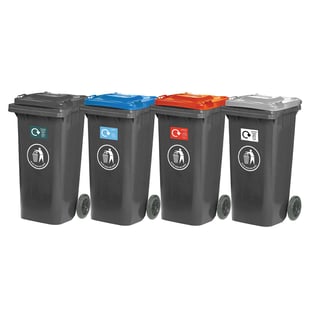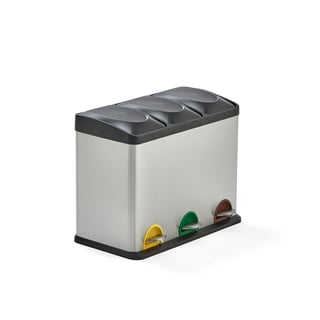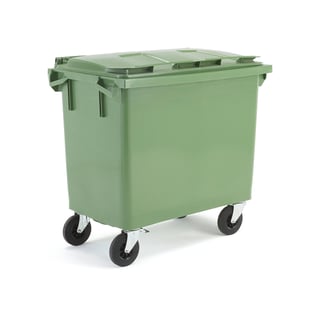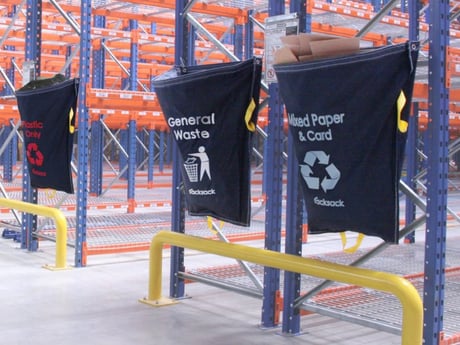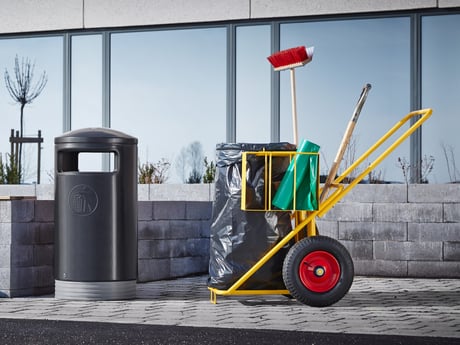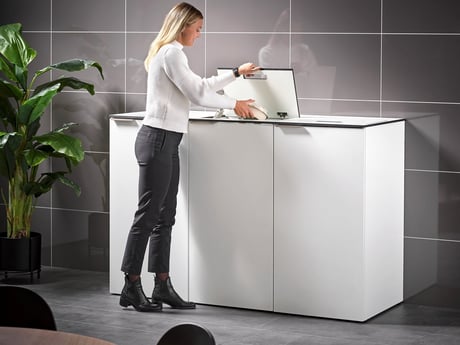- AJ Products UK
- Blog: Tips to Inspire Happiness at Work
- Tips & trends
- How to sort your waste and recycling at work
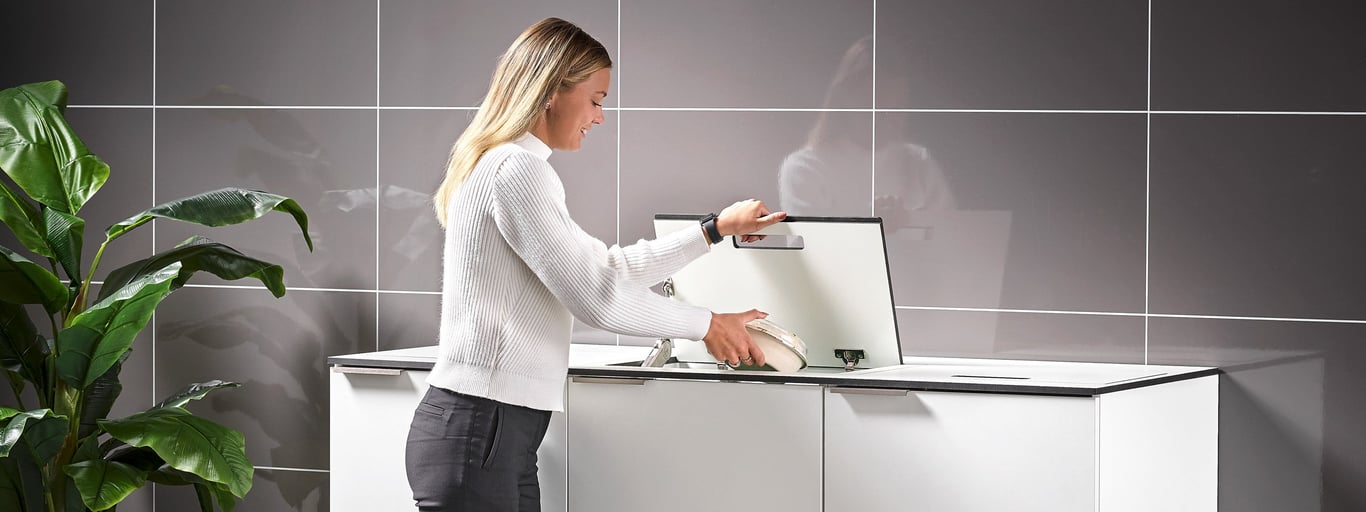
How to sort your waste and recycling at work
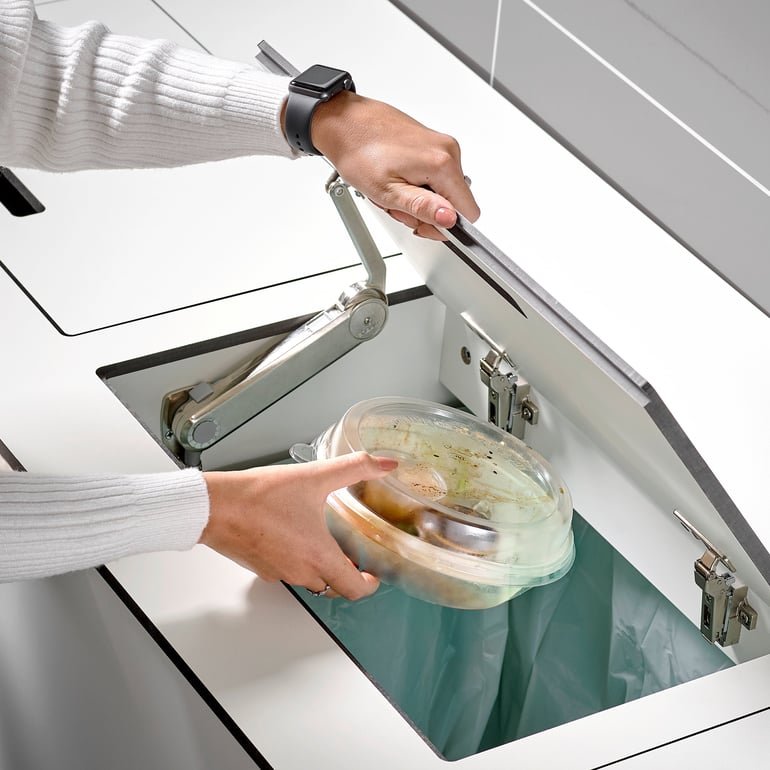
Why recycle? Save energy and natural resources
Everyone benefits from waste sorting. Not only can batteries and other hazardous waste be disposed of safely, but waste streaming provides numerous environmental benefits by saving energy and resources at the point of manufacture. For example, it is both more energy efficient and more resource efficient to create new paper from recycled material than to first incinerate old paper and cut down more trees to use as new raw material. As such, recycling helps your business reduce its environmental footprint.
Start by sorting out the most dangerous materials
A good tip is to start with the waste that causes the most damage: the environmentally- and health- hazardous waste. Some products contain substances that are toxic, explosive or flammable, and consequently harmful to both humans and the environment. Used batteries, low energy lamps, fluorescent lights, computers and other electrical waste are examples of waste that should be separated and taken to a specialist recycling centre. Place the hazardous waste in suitable containers while waiting for disposal / collection.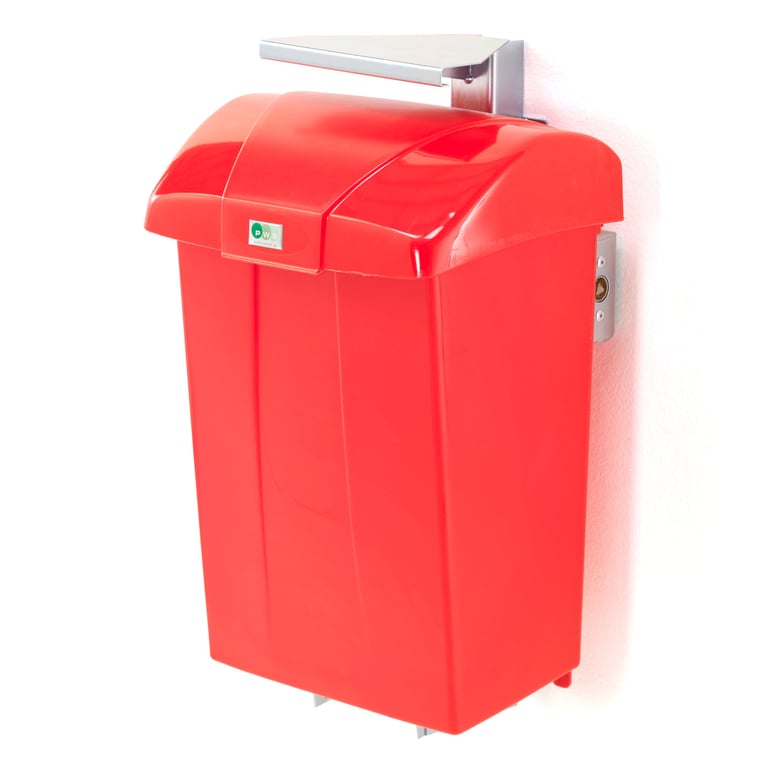
TIPS! Battery bins
Find out more
Make it easy around the workplace
The more we recycle, the better it is for the environment. So make it easy for everyone by placing recycling bins in convenient spots around the workplace. In offices, it is a good idea to have a bin for recycling paper under each desk and near any printers. In a warehouse or factory, waste collection points should be strategically located close to the places where waste materials are generated. When it comes to the number of waste containers, the more the merrier! That will increase the likelihood of each item ending up in the right place.Label waste receptacles clearly
Where you expect several different types of waste to be produced, make sure your system is simple to understand. Use clear labels and/or different coloured containers so that it is quick and easy to put rubbish in the right place. This is particularly important in the kitchen and canteen: separating plastic, glass and metal packaging from other waste is simple and has a big impact. Have separate receptacles for food waste (which will turn into compost) and non-recyclables. A well organised system with clearly marked containers all in one place is no more difficult than just throwing rubbish in the bin and will quickly become second nature.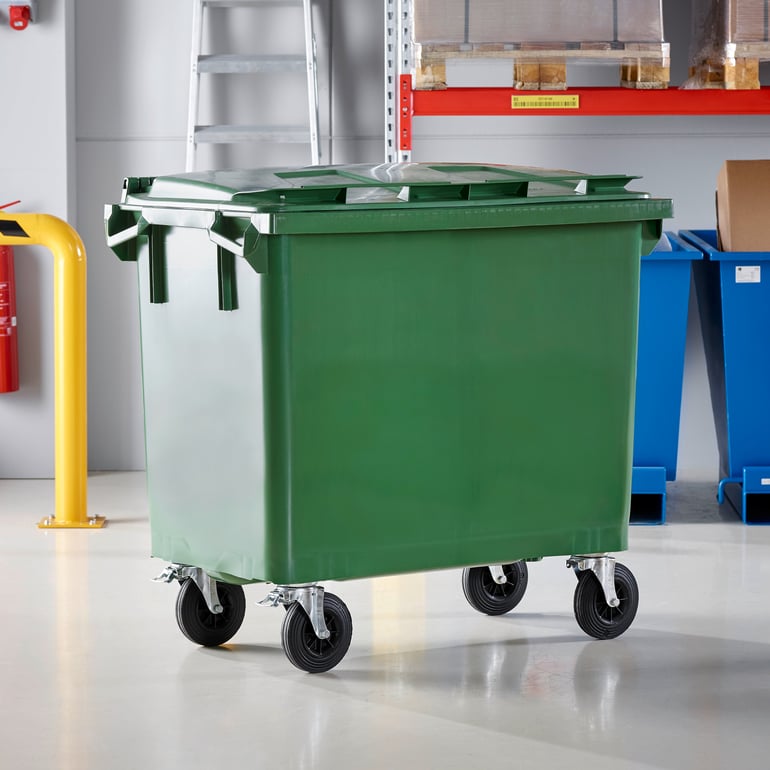
Use wheelie bins for large amounts of rubbish or recycling
Wheelie bins are ideal for use in warehouses and manufacturing facilities as well as "back of house" in offices, hotels, schools and more. They offer plenty of space and are very versatile, making them suitable both for any residual non-recyclable waste as well as for collecting large amounts of any other material for recycling, such as cardboard packaging or plastic waste. The bins are easy to move, empty and clean.Put residual waste in compostable bags
Any residual, non-recyclable waste will still need to be collected as usual but over time a successful waste sorting system will see this type of waste become a smaller and smaller part of your output. In the meantime, we recommend compostable refuse sacks.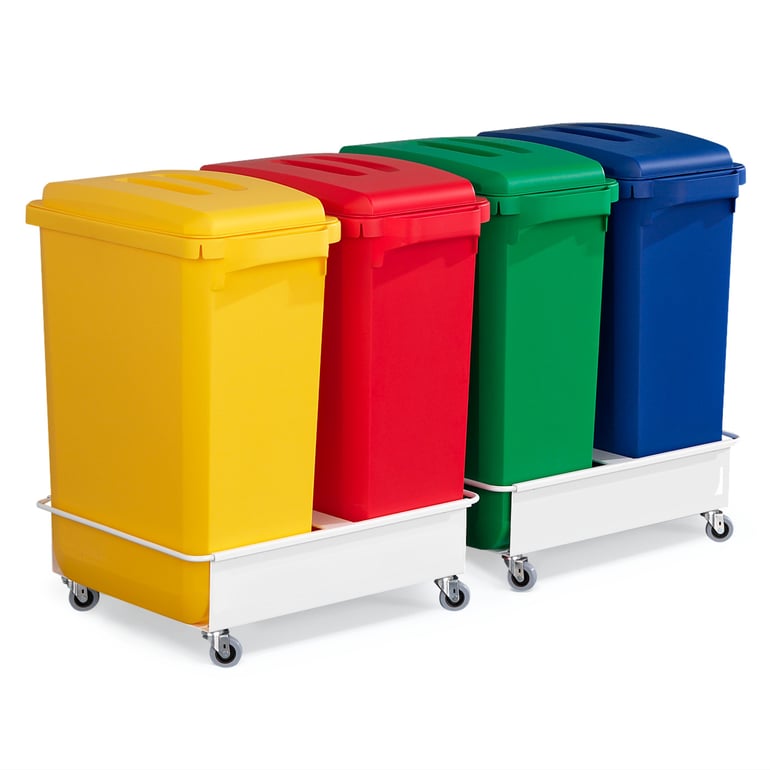
TIPS! Package deals are a great way to get started
Buying a set of recycling bins is a quick and easy way to set up your waste sorting station. This one features four different coloured bins that make it simple for people to throw their rubbish in the right bin. The bins come on a trolley to make them easy to move for a really simple and cost-efficient solution.View the recycling package
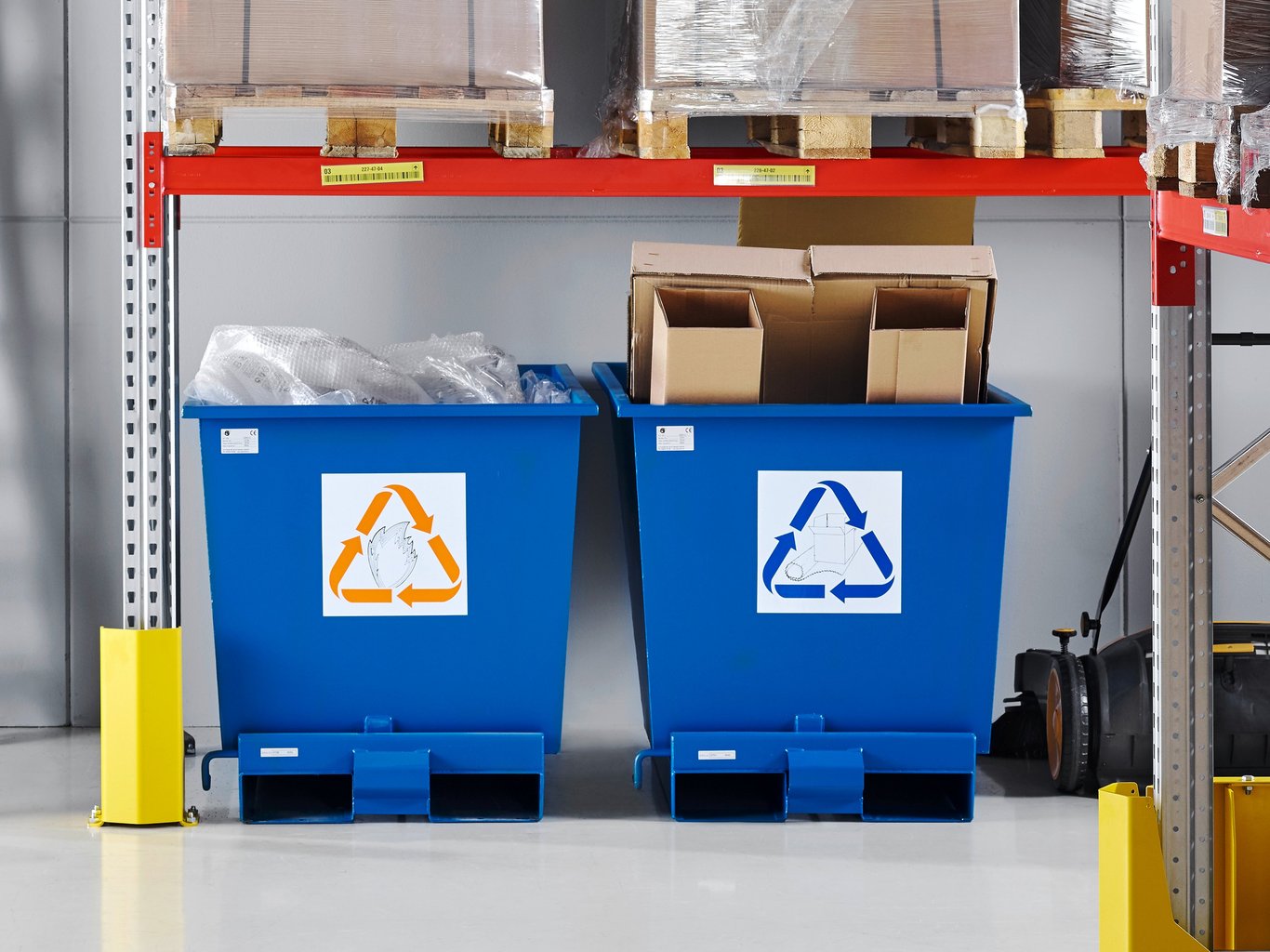
Use tipping skips for bulky waste
When it comes to waste sorting on a larger scale (of heavier materials, construction waste, etc.), tipping skips are an excellent choice. These robust containers are designed for heavy-duty handling of up to 3000 L of waste and for use with forklift trucks. As with recycling bins, they are available in several different colours to facilitate waste separation. Add lids, castors and labels to make it easy to do the right thing, even with the heaviest and roughest waste.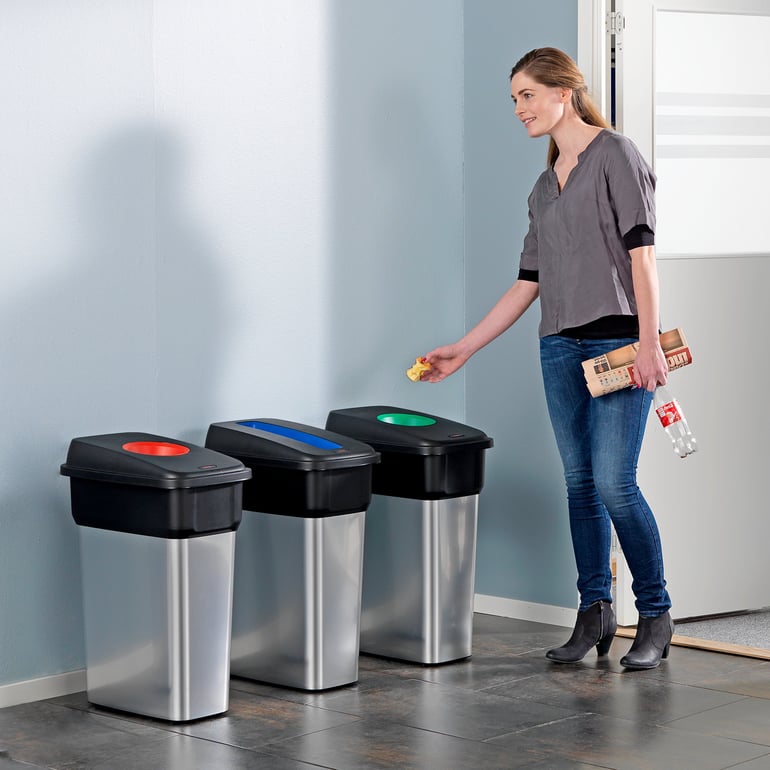
Seven tips to help you get started with recycling
2. Communicate clearly – Educate staff about what items can be recycled and which bins they should use. Use clear WRAP compliant labels on the bins themselves to show users what rubbish should go where. You could also make up a poster to go in kitchens and communal areas that makes it really easy. Make sure cleaning staff are aware of the recycling scheme as well.
3. Keep all the waste streams in one place – If you have space, choose a recycling set that includes several waste receptacles or openings. Having everything in one place means it will be just as easy for people to recycle as it used to be for them to throw all their rubbish into one bin. Remember, easy is key!
4. Have one than one recycling station – Make sure that employees always have a recycling station nearby so that there’s no excuse. You should position bins close to workstations as well as in the kitchen, breakroom, changing area and any other places staff congregate.
5. Think before you print - Do you really need to print that document? Often an electronic copy will suffice. Not only will this reduce paper waste but it will help save money on printing and ensure fewer copies of sensitive documents are produced, which will make it easier to manage GDPR. If you do have to print, use both sides of the paper.
6. Reduce consumables - Instead of providing plastic cups at the water dispenser and polystyrene cups and plastic spoons for tea and coffee, equip your workplace with reusable dishware and cutlery. Yes, you will need to make an initial investment in these items and perhaps even dishwashers, but it will save you money in the long run, not to mention reduce non-recyclable waste.
7. Use recycled ink cartridges - Recycled ink and toner cartridges are better for the environment and more cost effective for your business. Remember to recycle the cartridges you’ve used as well.
Remember that recycling doesn’t have to be difficult. Once your recycle-at-work scheme is up and running, it should become second nature to everyone in the office, reducing your impact on the environment and helping you to run a more eco-friendly business.
Need any help? Contact us.
